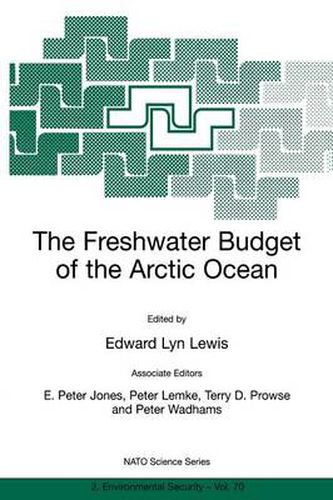The Freshwater Budget of the Arctic Ocean

The Freshwater Budget of the Arctic Ocean
This title is printed to order. This book may have been self-published. If so, we cannot guarantee the quality of the content. In the main most books will have gone through the editing process however some may not. We therefore suggest that you be aware of this before ordering this book. If in doubt check either the author or publisher’s details as we are unable to accept any returns unless they are faulty. Please contact us if you have any questions.
The hydrological cycle of the Arctic Ocean has intimate and complex linkages to global climate: changes in one affect the other, usually with a feedback. The combined effects of large river runoff, advection of meteoric water, low evaporation rates and distillation by freezing contribute to the formation of a strong halocline in the upper Arctic ocean, which limits thermal communication between the sea ice and the warmer waters of Atlantic origin below. Sea ice and freshened surface waters are transported from the marginal seas by winds and currents, ultimately exiting the Arctic Ocean through Fram and Davis Straits. Variations in the freshwater outflow from these regions affect the density structure of the Arctic Ocean itself and so the surface heat balance. Another feedback is the effect these variations have on the density profile of the water column in the Greenland and Labrador seas where, at present, convection takes place mixing surface waters downwards with those at greater depth. This downward convective motion produces dense deep waters that flow outwards from these two centres and affect the entire North Atlantic. Such deep outflows must be replaced by inward flowing waters at lesser depths. One such inward flow is the so-called North Atlantic Drift, which brings warm surface water to Northern Europe from the Gulf of Mexico. It is possible that enhanced outflow of fresher waters from the Arctic ocean may diminish this heat source. Year by year the accumulated observational evidence from diverse sources makes predictions of global climatic effects associated with changes in the freshwater flux out of the Arctic Ocean more likely to be true and gives a time scale to these potential effects. They may have very significant consequences for present human populations.
This item is not currently in-stock. It can be ordered online and is expected to ship in 7-14 days
Our stock data is updated periodically, and availability may change throughout the day for in-demand items. Please call the relevant shop for the most current stock information. Prices are subject to change without notice.
Sign in or become a Readings Member to add this title to a wishlist.


